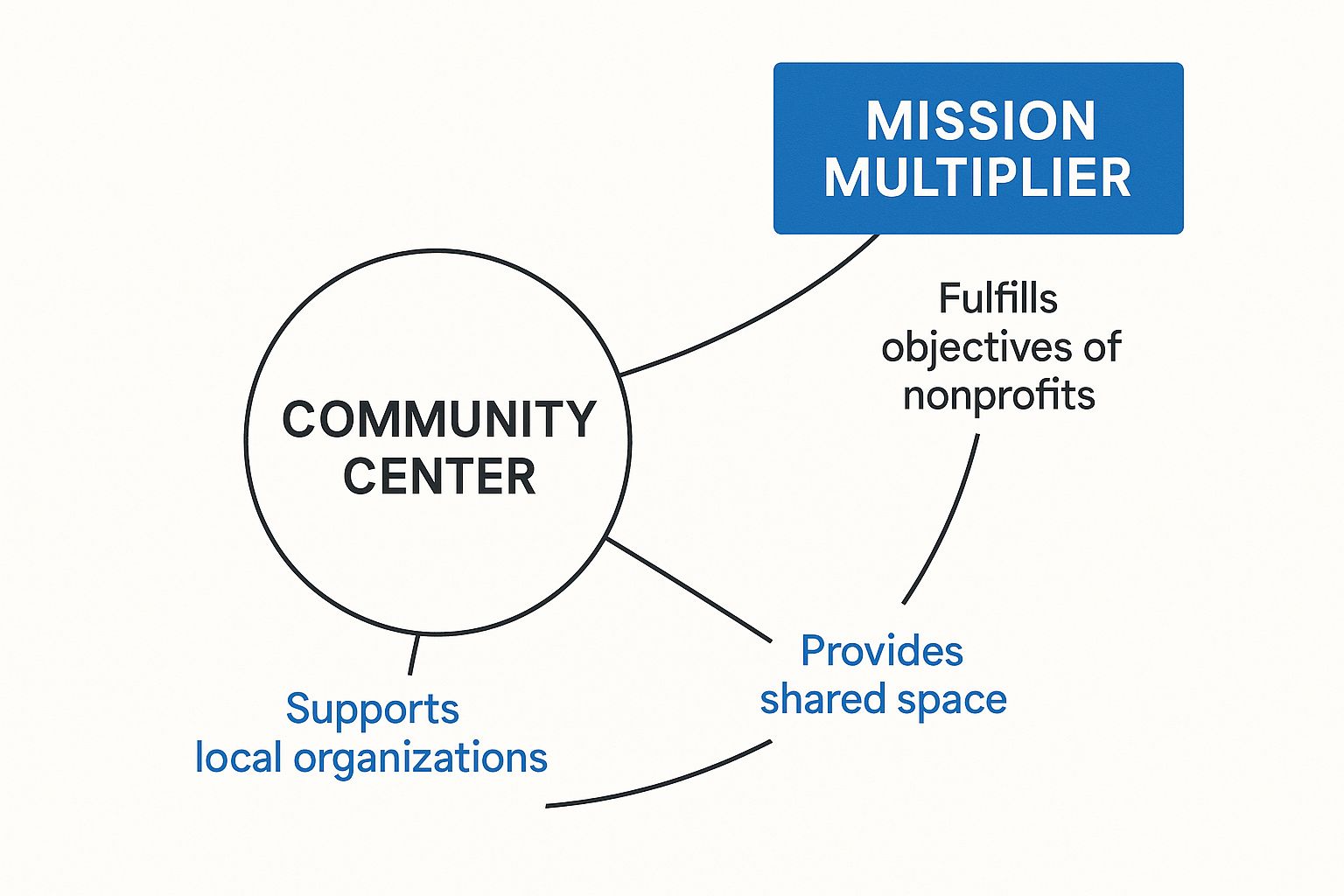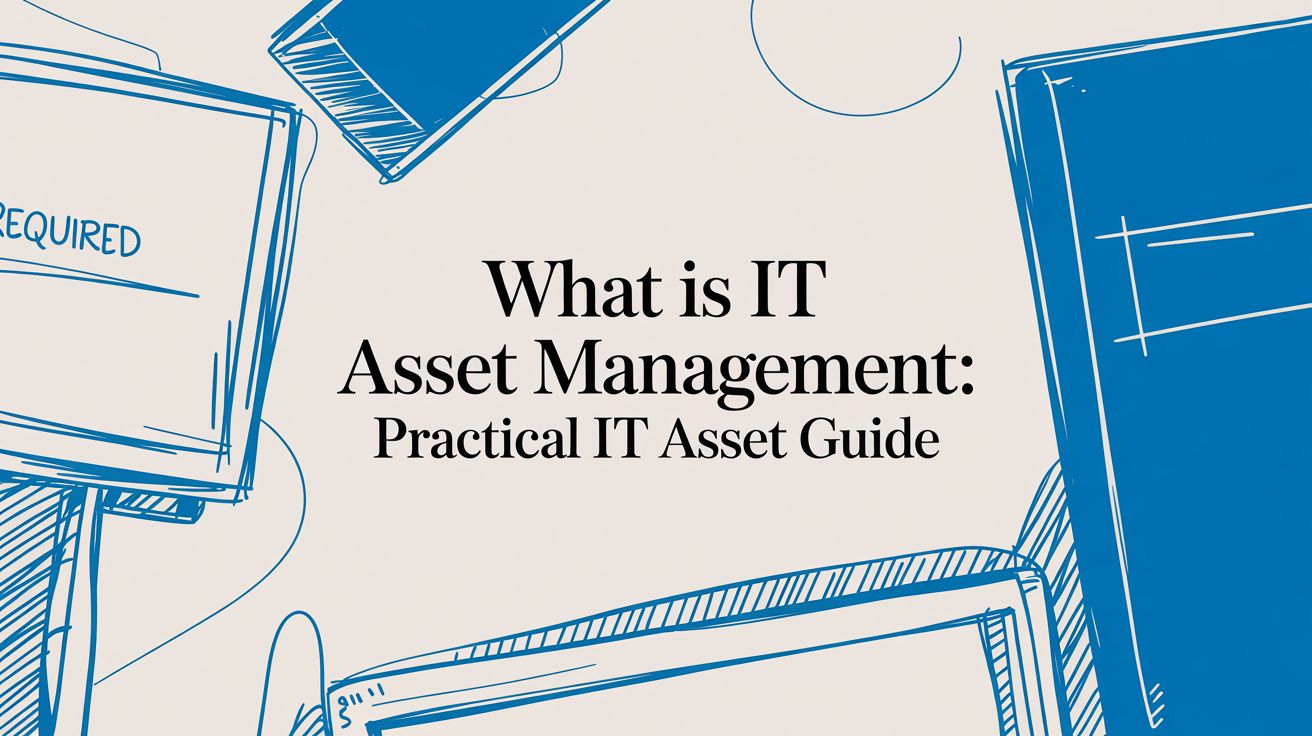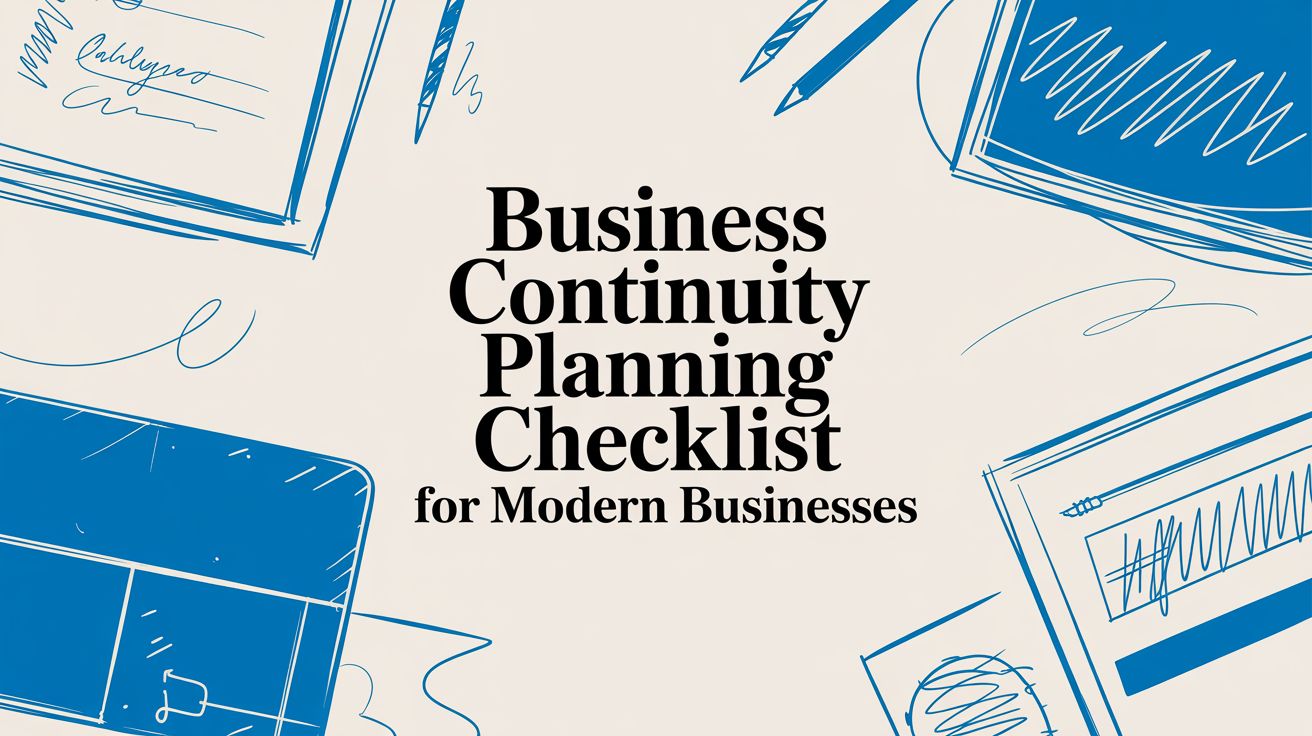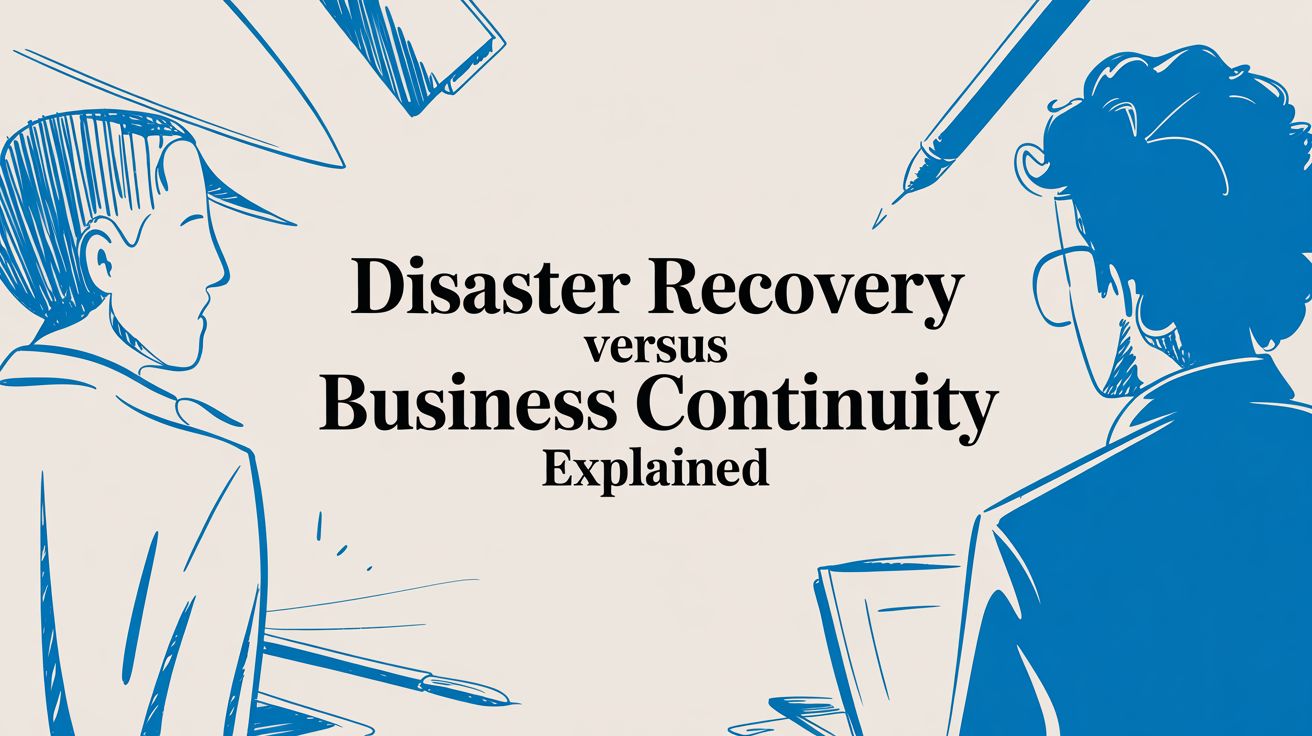A Nonprofit's Guide to Managed IT Support & Cybersecurity
For nonprofits, technology isn't just an expense line on a spreadsheet—it's the very engine that powers your mission. Think of proactive nonprofit IT support as the skilled mechanic who keeps that engine running smoothly, preventing breakdowns like data breaches or system failures that could bring fundraising and community outreach to a dead stop. The right IT partner transforms technology from a necessary evil into a powerful tool that expands your impact, protects donor data, and secures your mission's future.
Why Proactive IT Is a Mission Multiplier
Too many nonprofits get stuck in a "break-fix" rut with their technology. They wait for a server to crash or a laptop to fail, then scramble to fix it. This reactive cycle isn’t just inefficient; it's a direct threat to your mission.
Imagine waiting for the roof of your community center to leak during a thunderstorm before calling a roofer. The damage, cost, and disruption would be far greater than what you'd face with simple, routine maintenance.
That’s exactly how proactive managed IT services work. A managed services provider (MSP) focuses on preventing the digital equivalent of that leaky roof—things like a server crashing during a fundraising drive, a ransomware attack locking up donor data, or a system failure that halts program delivery. Instead of reacting to crises, proactive IT management ensures your operations are reliable, secure, and always ready to serve your community.
Shifting From Reaction to Prevention
Running a nonprofit today is incredibly demanding. According to the 2025 Nonprofit Tech Impact Report, 58% of nonprofit leaders say hiring and retaining staff is their biggest external challenge. Internally, 41% point to a lack of process automation as a major roadblock, creating a mountain of manual work that slows everyone down.
This is where a proactive IT strategy truly shines. It automates repetitive tasks, secures your infrastructure, and frees up your team to focus on what they do best: serving your cause. For example, a local Dallas-based food bank we work with was able to automate their volunteer intake process, saving their coordinator nearly 10 hours of manual data entry per week.
This infographic shows how a dedicated IT partner helps turn technology into a genuine mission multiplier for your organization.

The image captures that collaborative energy that drives a successful nonprofit, illustrating how well-integrated technology underpins the critical discussions and planning that move your mission forward.
The table below breaks down the core differences between the old break-fix model and a modern, proactive managed services approach.
Comparing Reactive vs Proactive IT Support for Nonprofits
As you can see, the proactive model is designed to support a nonprofit's long-term health and stability, turning IT into a reliable asset instead of a source of recurring headaches.
The Value of Strategic Partnership
A true nonprofit IT partner does so much more than fix broken computers. They take the time to understand your unique budget constraints, operational workflows, and mission-critical goals. By implementing robust systems for data backups, cybersecurity, and cloud collaboration, they build a resilient technology foundation that can withstand challenges.
A proactive approach means your team spends less time fighting with technology and more time serving your community. It transforms IT from a recurring problem into a strategic asset that helps you secure grants, manage volunteers, and expand your reach.
By investing in regular system checks and security updates, you sidestep those costly, mission-derailing emergencies. You can see how proactive maintenance for Dallas organizations works to prevent downtime and protect valuable data. Ultimately, this strategic shift frees you to focus on what truly matters: your mission.
Protecting Your Mission with Modern Cybersecurity
It's a common misconception that nonprofits are somehow off-limits to cybercriminals. In reality, you're a prime target. You hold a wealth of sensitive data—everything from donor financial records to confidential information about the people you serve. Protecting that data isn't just a tech issue; it's fundamental to maintaining the trust that powers your entire mission.
Think of it like securing a physical building. A single lock on the front door is a start, but it won't stop a determined intruder. Real security means having a layered defense—a concept known as "defense in depth."

A Layered Approach to Digital Defense
Good cybersecurity works the same way, creating multiple barriers that a cyber threat would have to break through. Each layer is designed to block a different kind of attack.
- Managed Firewalls: This is your digital perimeter fence. It actively monitors all traffic coming into and going out of your network, blocking malicious connections before they can get anywhere near your systems.
- Endpoint Protection: This is security for every device—your laptops, servers, and even mobile phones. Advanced Endpoint Detection and Response (EDR) solutions go beyond traditional antivirus to actively hunt for and neutralize sophisticated threats.
- Security Awareness Training: This is arguably the most critical layer. It trains your staff and volunteers to be your human firewall, spotting phishing emails and social engineering tactics that are designed to trick them into giving away access.
A proactive defense is the most affordable and essential shield for your organization's reputation and assets. It stops threats before they can disrupt your fundraising, compromise donor trust, or halt your vital community services.
Real-World Scenarios and Proactive Prevention
Imagine a staff member receives a cleverly worded phishing email that appears to be from a major grant foundation. Without proper training, they might click a malicious link, accidentally deploying ransomware that encrypts your entire donor database.
Now, picture that same scenario with proactive defenses. The email is flagged by the advanced email filter. Even if it gets through, the employee notices the subtle red flags taught in security training—a slightly off sender address, an urgent call to action—and immediately reports it. The attack fails, and your data stays safe.
That’s what a proactive security posture looks like in the real world. The whole point of comprehensive https://www.pwrtechnologies.com/it-security is to build these kinds of safeguards directly into your daily operations.
As nonprofits move more of their work to the cloud, the need for solid security only intensifies. This shift comes as threats are on the rise; by 2025, 27% of nonprofits worldwide had already reported experiencing at least one cyberattack. In response, many are investing in automated security tools, multi-factor authentication, and continuous staff education to bolster their defenses.
At its core, cybersecurity is all about preventing data loss. For a deeper dive, this guide on modern data breach prevention offers practical strategies to keep your information secure. By working with an IT support partner who understands the nonprofit world, you can build a layered defense that protects your mission from the ground up.
Using Cloud Solutions to Boost Collaboration
When you hear "the cloud," it's easy to picture something complex and expensive, built for big corporations with deep pockets. But for nonprofits, that couldn't be further from the truth. In reality, cloud technology is one of the most powerful and surprisingly affordable tools you can have for making your daily operations more efficient, secure, and flexible.
Think of it this way: traditional on-premise IT is like owning, securing, and maintaining an entire office building yourself—that’s your physical server. The cloud, on the other hand, is like renting a secure, professionally managed suite in a state-of-the-art building. It's more cost-effective, you can access it from anywhere, and expert security is already included.

Empowering Your Distributed Team
Whether your people are at headquarters, working from home, or meeting with partners in the field, cloud platforms like Microsoft 365 are the glue that holds everything together. They provide a central, secure hub for collaboration and productivity.
This unified digital space tears down communication walls and directly boosts productivity. We see this with our clients in a few key ways:
- Seamless Grant Collaboration: Instead of emailing different document versions back and forth, multiple team members can co-author a grant proposal in real-time. No more version-control headaches or lost edits.
- Centralized Volunteer Management: A Memphis-based client uses a shared SharePoint site to manage volunteer schedules, contact details, and event sign-ups. It’s always current and accessible to anyone who needs it, from anywhere.
- Secure Access to Program Data: Staff in the field can securely update beneficiary information or program stats on a tablet, knowing the data is instantly synced and backed up to the cloud. This ensures data is accurate and ready for reporting.
The real value of the cloud for nonprofits is its ability to turn a dispersed group of passionate individuals into a cohesive, connected team. It provides the digital tools needed to collaborate effectively, no matter where your mission takes you.
This model doesn't just make work easier; it strengthens your financial footing. You get a predictable monthly cost for these services, which means no more surprise hardware failures and budget-busting replacement bills. That stability lets you forecast your budget more accurately and dedicate more of your funding to what really matters—your programs. There are all kinds of infrastructure and cloud solutions out there designed to fit a nonprofit's unique needs.
To really push your mission forward, it's worth seeing what's possible with the latest tools. For inspiration, check out how programs like the AWS Imagine Grant are fueling generative AI and cloud innovation for nonprofits. By bringing these kinds of tools into your organization, you can advance your cause with more power and agility than ever before.
Building a Resilient Business Continuity Plan
Imagine a fire, flood, or a major cyberattack suddenly taking all your systems offline. For a nonprofit, that’s not just an inconvenience—it can bring your entire mission to a grinding halt. A business continuity plan is your playbook for making sure your vital work carries on, no matter what disaster comes your way.
This is about much more than just backing up a few files to an external hard drive. Real continuity planning is a complete, documented strategy to get your organization back on its feet quickly and with minimal disruption. It’s about answering the tough questions before you’re in a crisis, like how you’ll communicate with your team and which systems must come back online first to keep serving your community.
More Than Just Backups
Think of it like the fire drill plan for your office building. You don't just hope everyone figures out how to get out safely. You map out clear exit routes, pick a meeting point, and practice. A business continuity plan does the exact same thing for your digital infrastructure, turning a potential chaotic scramble into a calm, orderly recovery.
A solid plan blends smart technology (like automated cloud backups) with clear processes (like a communication tree for emergencies). It lays out the exact steps your team will follow to restore operations.
The goal of business continuity is simple: to make a potential disaster a manageable event. With a tested plan, you can turn days of crippling downtime into just a few hours of recovery, protecting your mission and reputation.
Take, for example, a Dallas-area nonprofit that recently had a catastrophic server failure. This could have wiped out years of donor information and program records. But because they had a robust, well-tested disaster recovery plan in place with their IT partner, their most important systems were restored from cloud backups in under four hours. They were back to providing essential services to the community that very same day.
Key Components of a Resilient Plan
A strong business continuity plan rests on a few core pillars. Each one tackles a different kind of risk, and together they create a powerful safety net for your entire organization.
A comprehensive plan should always include:
- Risk Assessment: First, you have to know what you’re up against. This means identifying the most likely threats, from something as simple as a power outage to a sophisticated ransomware attack.
- Business Impact Analysis (BIA): This is where you figure out which of your systems and data are the most critical for your daily work. This analysis helps you prioritize what gets protected and restored first.
- Data Backup and Recovery Strategy: You need automated, off-site, and cloud-based backups that are tested on a regular basis. A backup is useless if you discover it doesn't work when you actually need it.
- Communication Plan: Who calls who? This part establishes clear, simple protocols for getting in touch with staff, volunteers, board members, and key partners during a crisis.
Building a plan that covers all these bases is fundamental to your organization’s resilience. By planning for the worst, you give your team the power to continue doing its best work, no matter what challenges arise. You can explore how professional services help create a comprehensive business continuity plan in Dallas, TX designed to safeguard your nonprofit's future.
How Managed IT Services Stretch Your Budget
For any nonprofit, every dollar is a promise made to your cause. Stretching that budget without sacrificing your ability to operate effectively is a constant balancing act. This is where a smart approach to IT support stops being an expense and becomes a powerful financial tool.
Instead of seeing professional IT as a luxury, it's time to view it as a strategic investment. The old way of doing things—hiring an in-house IT specialist—comes with a hefty, fixed salary plus benefits, training, and other overhead. For that one salary, you get one person’s expertise. Managed IT services completely flip that model on its head.
The Value Of Predictable Costs
For a flat, predictable monthly fee, you get an entire team of specialists on your side. We're talking experts in cybersecurity, cloud systems, network support, and helpdesk services. This model gets rid of the surprise repair bills and expensive downtime that can bring fundraising and community outreach to a grinding halt.
By partnering with a Managed Services Provider (MSP), you convert a volatile, unpredictable capital expense into a stable, manageable operating expense. This financial predictability is a game-changer for budget planning and frees up vital resources for your core programs.
This approach ensures your technology budget is working as hard as you are, maximizing every dollar for your mission. The goal is to make your IT a reliable asset, not a financial drain.
Cost Analysis of In-House IT vs Managed IT Services
The financial difference really comes into focus when you compare the two models side-by-side. An MSP gives you a much broader skill set for a fraction of what it costs to hire a single full-time employee.
This table breaks down the simple math for nonprofit decision-makers.
As you can see, outsourcing your IT is a strategic financial decision that ensures your organization stays resilient and focused on what truly matters.
For organizations that already have an IT person on staff, a Co-Managed IT partnership offers the best of both worlds. In this model, an MSP comes alongside your internal staff, backing them up with advanced tools, 24/7 monitoring, and specialized expertise. It enhances their capabilities without replacing them.
You can learn more about how these flexible managed IT services adapt to fit your organization's unique needs.
Choosing the Right IT Partner for Your Cause
Finding the right IT provider is about so much more than just technical skill. You're not just hiring a vendor; you're looking for a partner who genuinely understands and supports your mission. The goal is to find an organization that feels like a true extension of your team, not just a faceless helpdesk.
This whole process really starts with asking the right questions. Of course, you need to know they can handle the technical side, but you have to dig deeper to find a partner who fits your nonprofit's unique culture and the way you work. A provider who only wants to talk about servers and software without first asking about your programs probably isn't the right fit.
Key Questions for Potential IT Providers
Before you even think about signing a contract, sit down with potential partners and treat it like you're interviewing someone for a key leadership role. Their answers will tell you everything you need to know about whether they're truly invested in your success.
Here are a few questions to get the conversation started:
- Mission Alignment: “Can you share some examples of how you've helped other nonprofits use technology to actually increase their impact?”
- Software Experience: “What’s your experience with the specific tools we rely on, like our donor management, fundraising, or grant management software?”
- Strategic Guidance: “Do you help organizations find and apply for technology grants or get nonprofit software discounts from vendors like Microsoft?”
These kinds of questions shift the conversation from simple tech support to a genuine strategic partnership, which is exactly what a mission-driven organization needs.
A true partner doesn't just fix problems when they break. They proactively look for ways technology can help you raise more money, reach more people, and run your programs more efficiently.
This strategic thinking is especially critical for your online presence. Think about it: organic search drives 44% of nonprofit website traffic, so a technically sound website is non-negotiable.
And while it's great that 68% of nonprofits have a cybersecurity plan in place, many sites still suffer from high bounce rates. This often points to issues with user experience and technical performance—a core area where a skilled IT partner can make a huge difference. You can dive deeper into these numbers with the nonprofit website statistics from NPtechforgood.com.
Ultimately, choosing the right partner, whether you're in Dallas, TX, or Memphis, TN, comes down to finding a team that is as committed to your cause as you are.
Your Questions About Nonprofit IT, Answered
As a nonprofit leader, you're constantly weighing decisions that impact your mission. Technology is a big one, so let's clear up some of the most common questions we hear about IT support.
Is Professional IT Support Really Affordable on Our Budget?
Absolutely. In fact, thinking you can't afford it is often the costlier mistake. Managed IT services are built to be budget-friendly, especially compared to the alternative.
Instead of paying a full-time salary for one in-house IT person, you get a whole team of experts for a single, predictable monthly fee. This means no more surprise invoices when a server goes down, and you drastically reduce the expensive downtime that brings your work to a halt. It lets you treat technology as a stable, planned expense, freeing up more of your funds for the community you serve.
What's the Single Most Important Thing We Can Do for Cybersecurity?
Start with Multi-Factor Authentication (MFA). If you do nothing else, do this. Turning on MFA for all your accounts—email, donor databases, financial software—is the fastest and most effective way to block unauthorized access.
Think of it as adding a deadbolt to your digital front door. When you combine that simple step with regular security awareness training for your staff, you build a powerful defense that stops most cyber threats in their tracks. It’s a low-cost, high-impact starting point.
We Already Have an IT Person. How Would This Work?
That’s a perfect scenario for what we call Co-Managed IT. This isn't about replacing your team member; it's about giving them superpowers. The relationship is a partnership, not a takeover.
Co-Managed IT enhances your internal capabilities by blending your team’s institutional knowledge with an MSP’s advanced tools and specialized expertise.
For instance, your IT person knows your organization inside and out. We can support them by handling the daily helpdesk tickets, which frees them up to focus on bigger projects. Or, we can bring specialized expertise for a complex cloud migration they haven't tackled before. It’s truly the best of both worlds.
Ready to turn your technology into a mission multiplier? The team at PWR Technologies is here to provide the proactive, reliable, and budget-friendly IT support your nonprofit deserves. Learn more about how we empower Dallas and Memphis organizations.




